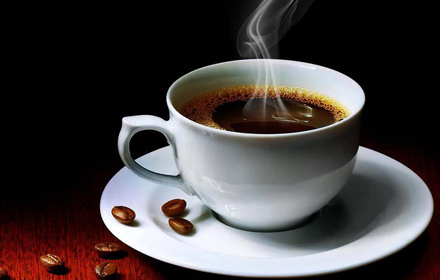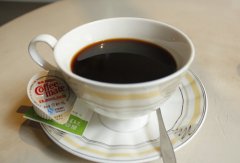Hawaiian Kona / Kona Coffee what is Kona coffee? The introduction of quality coffee is the best.

Hawaii, a beautiful tropical Pacific island, in addition to beautiful scenery, it also produces the famous Kona coffee. Kona is also named after the origin, and only coffee beans grown and certified on the southwest coast of Hawaii, 20 miles long and 2 miles wide, at an altitude of 150 meters to 750 meters, covering the slopes of Hualalai and Mauna Loa volcanoes, can be sold under the Kona brand name.
Kona coffee, Arabica variety, beautiful appearance, bean shape is even, taste crisp, medium alcohol, with a slight acidity, while having a strong aroma, long finish. Kona coffee is divided into four grades: Extra Fancy, Fancy, Prime and Gr.No.1. Due to low yields and high production costs, Kona prices are catching up with Jamaica Blue Mountain in the market and good Kona beans are becoming increasingly difficult to obtain in the face of increasing demand for fine coffee.
The excellent quality of Kona coffee is due to its geographical location and climate. Coffee trees grow on the slopes of volcanoes and the ash soil is fertile. The weather was pleasant, the sun gently passing through the steamy air in the morning, the mountains becoming wetter and foggy in the afternoon, the clouds surging in the air acting as natural umbrellas for the coffee trees, and the evening becoming clear and cool, but free of frost. Natural conditions have allowed the average yield of Kona coffee to be very high, reaching 2240 kilograms per hectare, compared with 600 to 900 kilograms per hectare in Latin America.
Kona coffee green beans are usually small packages of single-serve coffee beans. Kona coffee is also often mixed with other coffee beans to make coffee blends, Kona coffee beans mixed with other beans will be labeled "Kona Blend" on the package, unfortunately, this blend of beans, the content of Kona beans may be very low, in Hawaii can use the "Kona" label of beans in the blend of the minimum content of Kona beans is only 10%.
Hawaii Kona coffee beans are the most beautiful coffee beans in the world. They are unusually full and shiny. Kona coffee beans are evenly shaped, with intense acidity and sweetness. They taste moist and smooth. Hawaii's unique volcanic climate creates the unique aroma of Kona coffee because of its volcanic growth, and its high intensity of artificial cultivation, so that each bean can be said to be spoiled "ladylike", with signs of fullness and baby-like skin.
Kona coffee tastes fresh, crisp, medium-bodied, with a slight acidity and a strong aroma that lasts long. The rarest thing is that Kona coffee has a blend of wine, fruit and spice, as charming as the colorful colors of this volcanic archipelago, so that some people think this mild is synonymous with bland, Kona is too refreshing, too simple. But if you're one of those people who wants to get into the mood with the aroma of coffee before you taste it, Kona is the coffee for you, because it's not as mellow as Indonesian coffee, not as strong as African coffee, not as rough as Central and South American coffee. Kona coffee is like a girl walking in the Hawaiian sun and breeze, fresh and natural, not warm.
Important Notice :
前街咖啡 FrontStreet Coffee has moved to new addredd:
FrontStreet Coffee Address: 315,Donghua East Road,GuangZhou
Tel:020 38364473
- Prev

Single Coffee-the uniqueness of Sumatran Manning Coffee quality Manning Coffee
The famous producers of Asian coffee are the islands of the Malay Archipelago: Sumatra, Java, Kalimantan (formerly known as Borneo in Borneo), Sulawesi and New Guinea. The history of coffee cultivation in Sumatra began in the 18th century, and the origin of the name Mantenin itself
- Next

How about Indonesian coffee? What is the quality of Indonesian coffee? What is the real seal?
The mellow thickness of Asian coffee is higher than that of Central and South American and African beans, but its sour taste is lower, with slightly sunken wood, herb, spice and earthy flavor, and its low and stuffy aroma is higher than that of rising sour flavor. At the end of the 17th century, the Dutch East India Company transplanted Indian Arabica trees (Tibica) to Jakarta, Java. Due to the favorable climate and soil, Arabica quickly spread to Sumatra in Java.
Related
- Does Rose Summer choose Blue, Green or Red? Detailed explanation of Rose Summer Coffee plots and Classification in Panamanian Jade Manor
- What is the difference between the origin, producing area, processing plant, cooperative and manor of coffee beans?
- How fine does the espresso powder fit? how to grind the espresso?
- Sca coffee roasting degree color card coffee roasting degree 8 roasting color values what do you mean?
- The practice of lattes: how to make lattes at home
- Introduction to Indonesian Fine Coffee beans-- Java Coffee producing area of Indonesian Arabica Coffee
- How much will the flavor of light and medium roasted rose summer be expressed? What baking level is rose summer suitable for?
- Introduction to the characteristics of washing, sun-drying or wet-planing coffee commonly used in Mantenin, Indonesia
- Price characteristics of Arabica Coffee Bean Starbucks introduction to Manning Coffee Bean Taste producing area Variety Manor
- What is the authentic Yega flavor? What are the flavor characteristics of the really excellent Yejasuffi coffee beans?

